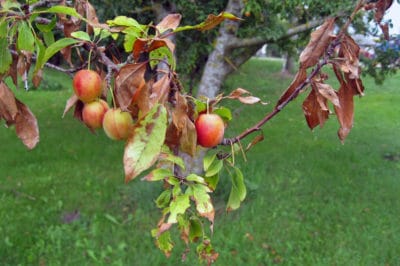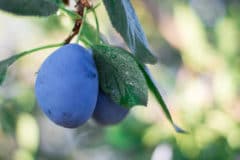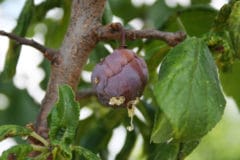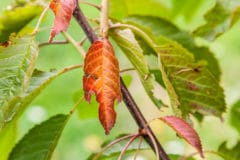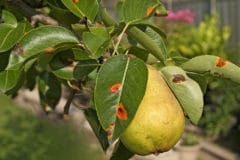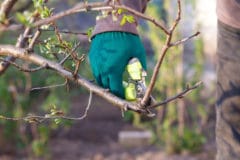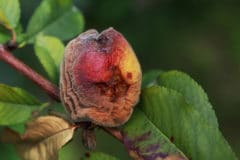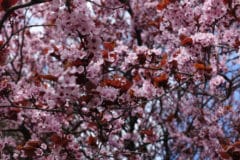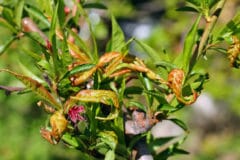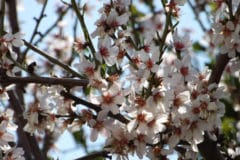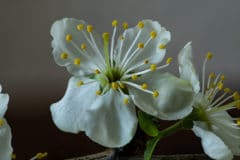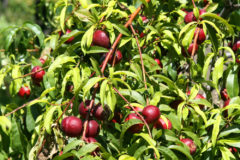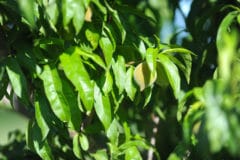Most Common Diseases in Plum Trees
Below are some of the most common disease problems in plum trees:
- Leaf curl causes puckering and discoloration of leaves, with reddish lesions developing. The tree can become defoliated in severe cases. Remove fallen leaves to control.
- Brown rot causes fruit to rot, turn brown, and develop spots. Affected fruits become mummified, often remaining on the tree. Mummified fruits contain spoors which renew the lifecycle of the pathogen. Citrus sprays can be effective along with good orchard hygiene.
- Perennial canker is a fungus infecting damaged areas on the tree. Poorly drained soil can also lead to this problem. Gummy wounds and wood which looks water-soaked are other indicators. Plant trees in a well-drained location.
- Crown gall reduces the growth rate of the tree and size of the leaves and fruit. Look for woody growths at the base of the tree.
- Bacterial leaf spot often first appears on the underside of leaves. Spots frequently fall out, leaving a hole in the leaf, which may yellow as a result. Fruit is also affected with cracks and sunken spots.
- Black knot appears in spring with velvety-green growths appearing on branches and twigs. These lesions later turn black and swell up. The damage can girdle the limbs or trunk, causing them to die. Prune-out infected branches and burn or dispose of off site.
- Plum pox virus is a serious and often fatal disease of plum trees. The disease is transmitted by aphids and grafting. Control of aphids is important for management.
- Scale is a pathogen with minute, circular, scales with yellow dots which can appear on branches, twigs, and fruit. Dormant oil sprays can be effective for controlling scale.
Plum Tree Pests
Some of the most common pests infesting plum trees include:
- Plum circulio is a small, slow moving beetle with larvae and adults doing significant damage to the fruit. Insecticides and physical controls are effective against this pest.
- Aphids are small, often green insects which can appear in large clusters on the underside of leaves, leaving a sticky substance called honeydew. Aphids are vectors for other fruit tree diseases. Citrus sprays can be effective for control, as well as washing the aphids off of the tree with a strong jet of water.
To minimize damage to the tree and fruit, treat disease and pest symptoms on plum trees as soon as they appear. Plant resistant cultivars, if available, and do not plant new trees in the same location as old trees.
Text:
